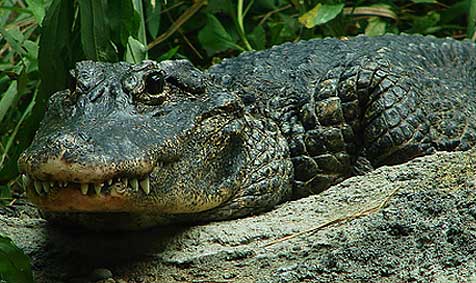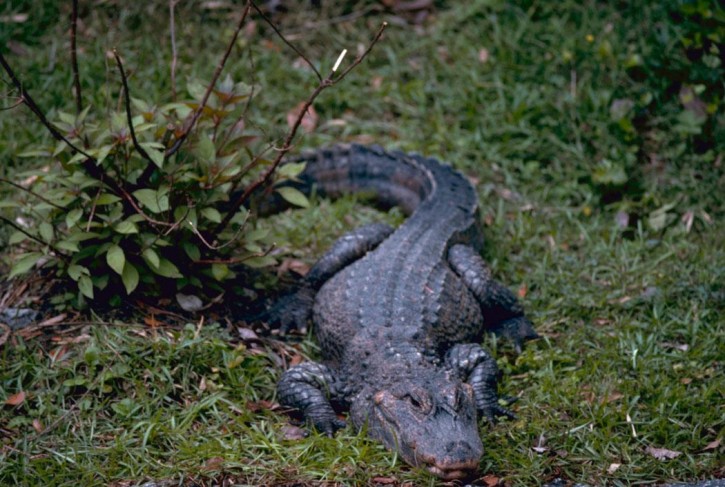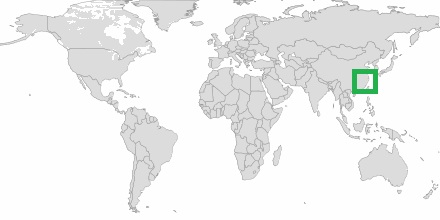Post by Ceratodromeus on Feb 13, 2017 5:03:01 GMT 5

Scientific classification
Kingdom: Animalia
Phylum: Chordata
Subphylum: Vertebrata
Class: Sauropsida
Order: Crocodilia
Family: Alligatoridae
Genus: Alligator
Species: A.sinensis
Biology
While its appearance is very similar to the only other living member of the genus, the American alligator (Alligator mississippiensis), a few differences exist. Usually, this species attains an adult length of only 5 feet (1.5 m) and a mass of 80 pounds (36 kg). Exceptionally large males have reached 7 feet (2.1 m) in length and 100 pounds (45 kg) in weight. Reports are known of alligators in China reaching 10 feet (3.0 m) in centuries past, but these are now generally considered apocryphal Unlike the American alligator, the Chinese alligator is fully armored; even its belly—a feature of only a few crocodilians.
Overall, the Chinese alligator lives in a subtropical, temperate region.[5] The Chinese alligator's usual habitat was in places of low-elevation and freshwater sources. This includes marshes, lakes, streams, and ponds.[6] Wetlands are extremely important to the Chinese alligators due to the biodiversity that is within them
The Chinese alligator remains dormant during the winter, residing in burrows built into banks of wetlands. Once the spring comes the burrows are still used, just not as much. The alligators spend most of their time raising their body temperature in the sun. Once their body heat is high enough they become nocturnal. They can regulate their body temperature easily by using the water, moving into the shade when they begin to get too hot and moving into the sun if they begin to get too cold. Chinese alligators are also considered the most docile of the crocodilian order, but, as with any crocodilian, it is capable of inflicting grievous bodily harm.
Though usually solitary, the Chinese alligator participates in bellowing choruses during the spring mating season. Both genders participate in rough unison and during the chorus the alligators remain still. The choruses last on average about 10 minutes and interestingly enough respond to both the chorus of both genders equally. It has been theorized that this is because the chorus is not a mating competition, simply a way for mating groups to gather together. It has also been theorized, however, that these choruses do not serve any purpose. Once mating groups have gathered male Chinese alligators impregnate only one female per season.Mating usually results in around 20-30 eggs. The eggs of the Chinese alligator are actually the smallest of any crocodilian. Their eggs are even smaller than other crocodilians with smaller female body sizes. In the past decade, very few wild nests have been found, and even fewer produced viable offspring.

Geographic distribution, Habitat use, and exploitation
The alligator originally ranged through much of China. However, in the 1950s, the Chinese alligator was found only in the southern area of the Yangtze River (Chang Jiang) from Pengze to the western shore of Lake Tai (Tai Hu), in the mountainous regions of southern Anhui, and in Jiangsu and Zhejiang provinces. They were usually found in the lakes, streams, and marshes for a time. But in the 1970s, the species was restricted to a small part of southern Anhui and the Zhejiang provinces. Then, in 1998 the biggest area the alligator lived in was a small pond along the Yangtze River surrounded by farmland, and only 11 alligators lived inside of it.At this point, the alligator's geographic range had been reduced by 90%.The Chinese alligator's population reduction has been mostly due to conversion of its habitat to agricultural use. A majority of their usual wetland habitats has been turned into rice paddies. Poisoning of rats, which the alligators then eat, has also been blamed for their decline. It was also not uncommon for people to kill the alligators, because they believed they were pests, out of fear, or for their meat.

en.wikipedia.org/wiki/Chinese_alligator


